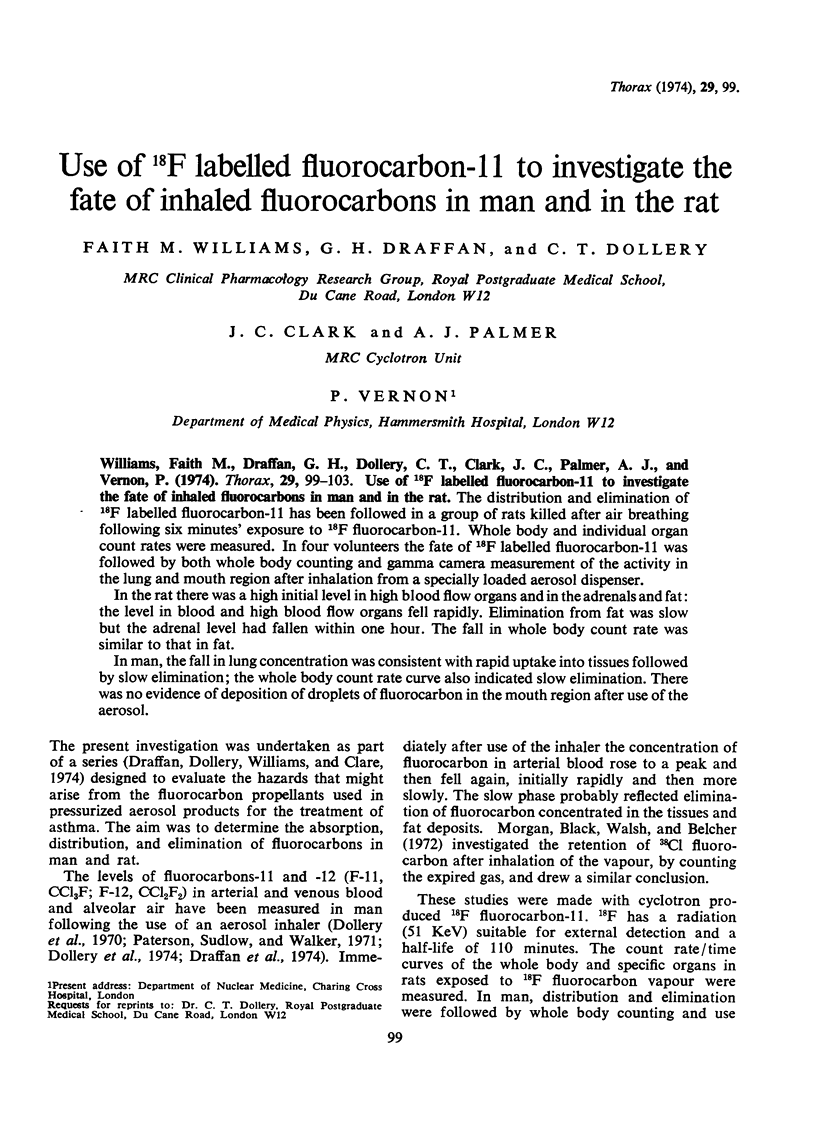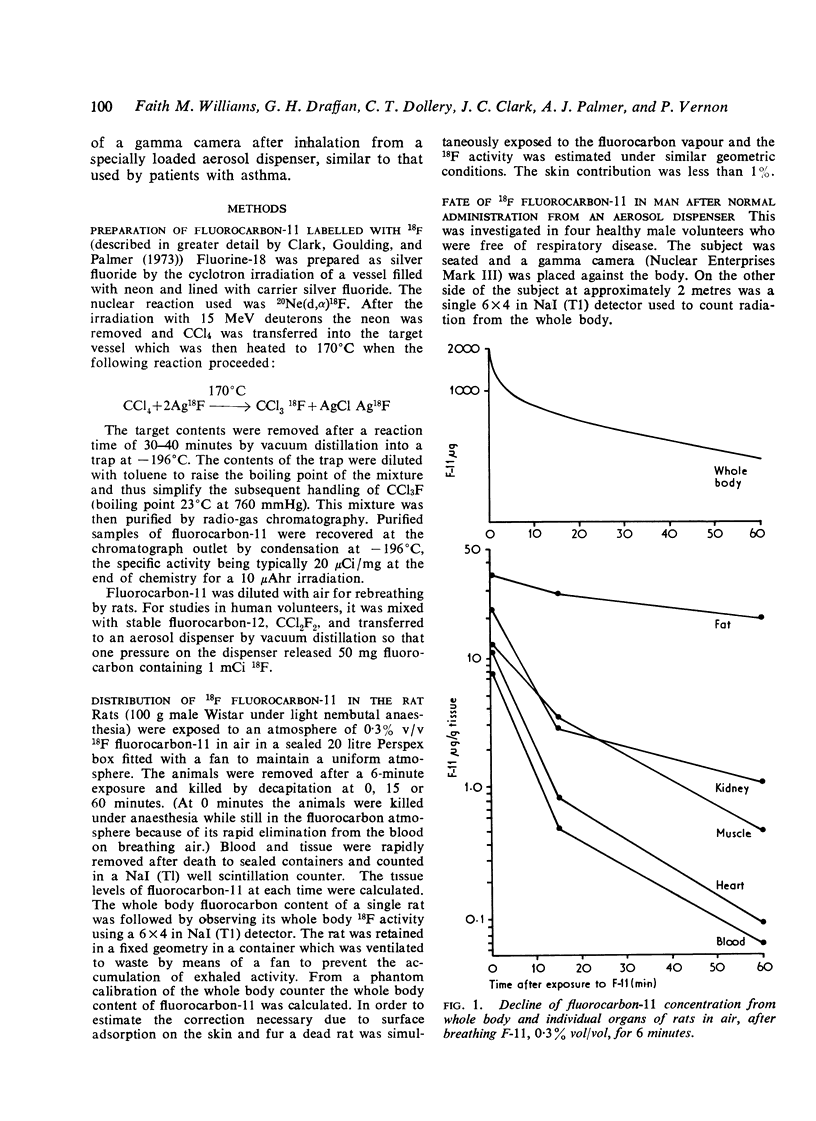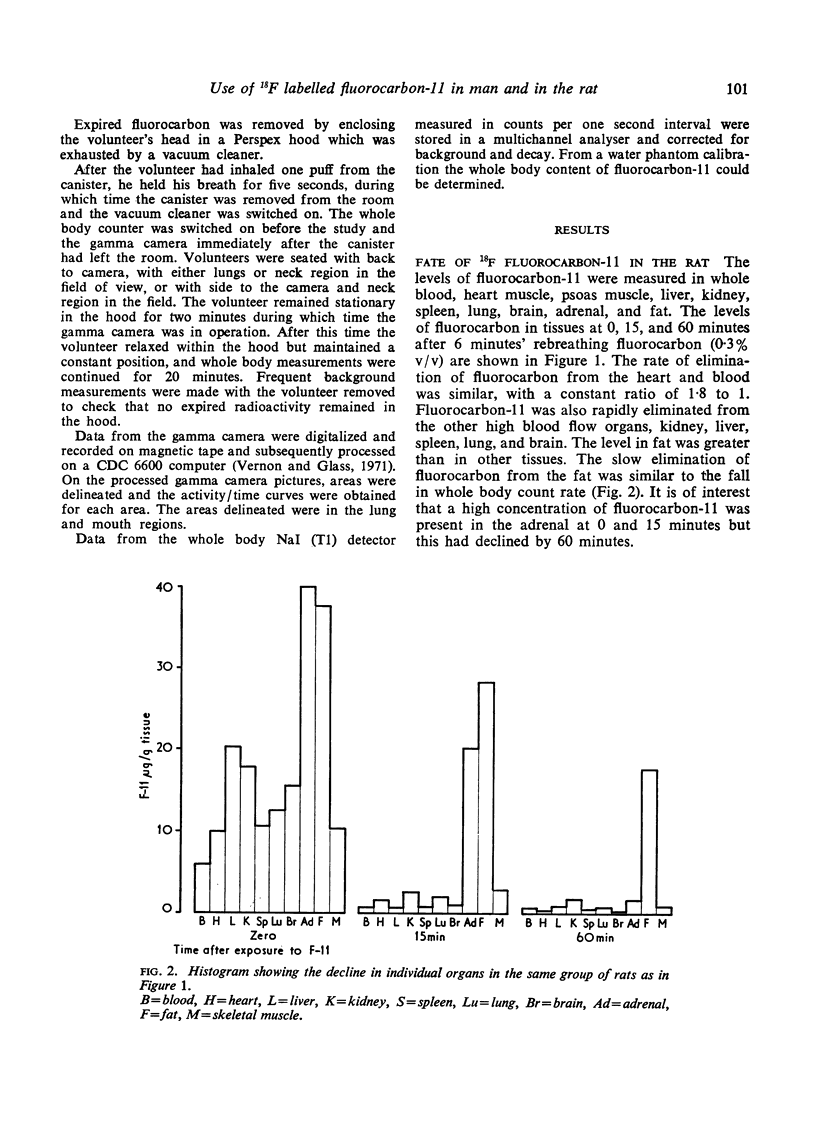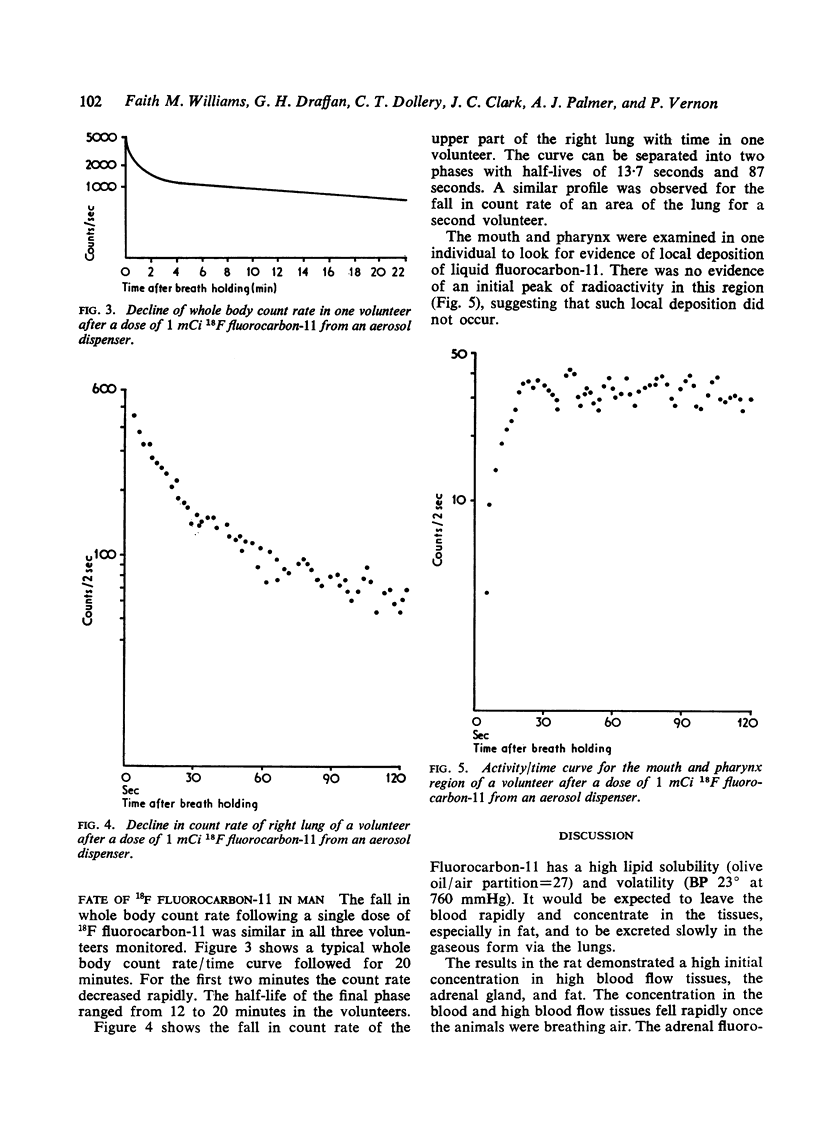Abstract
Williams, Faith M., Draffan, G. H., Dollery, C. T., Clark, J. C., Palmer, A. J., and Vernon, P. (1974).Thorax, 29, 99-103. Use of 18F labelled fluorocarbon-11 to investigate the fate of inhaled fluorocarbons in man and in the rat. The distribution and elimination of 18F labelled fluorocarbon-11 has been followed in a group of rats killed after air breathing following six minutes' exposure to 18F fluorocarbon-11. Whole body and individual organ count rates were measured. In four volunteers the fate of 18F labelled fluorocarbon-11 was followed by both whole body counting and gamma camera measurement of the activity in the lung and mouth region after inhalation from a specially loaded aerosol dispenser.
In the rat there was a high initial level in high blood flow organs and in the adrenals and fat: the level in blood and high blood flow organs fell rapidly. Elimination from fat was slow but the adrenal level had fallen within one hour. The fall in whole body count rate was similar to that in fat.
In man, the fall in lung concentration was consistent with rapid uptake into tissues followed by slow elimination; the whole body count rate curve also indicated slow elimination. There was no evidence of deposition of droplets of fluorocarbon in the mouth region after use of the aerosol.
Full text
PDF




Selected References
These references are in PubMed. This may not be the complete list of references from this article.
- Cox P. J., King L. J., Parke D. V. A study of the possible metabolism of trichlorofluoromethane. Biochem J. 1972 Nov;130(1):13P–14P. doi: 10.1042/bj1300013pb. [DOI] [PMC free article] [PubMed] [Google Scholar]
- Dollery C. T., Davies D. S., Draffan G. H., Williams F. M., Conolly M. E. Blood concentrations in man of fluorinated hydrocarbons after inhalation of pressurised aerosols. Lancet. 1970 Dec 5;2(7684):1164–1166. doi: 10.1016/s0140-6736(70)90344-2. [DOI] [PubMed] [Google Scholar]
- Draffan G. H., Dollery C. T., Williams F. M., Clare R. A. Alveolar gas concentrations of fluorocarbons-11 and-12 in man after use of pressurized aerosols. Thorax. 1974 Jan;29(1):95–98. doi: 10.1136/thx.29.1.95. [DOI] [PMC free article] [PubMed] [Google Scholar]
- Morgan A., Black A., Walsh M., Belcher D. R. The absorption and retention of inhaled fluorinated hydrocarbon vapours. Int J Appl Radiat Isot. 1972 Jun;23(6):285–291. doi: 10.1016/0020-708x(72)90076-2. [DOI] [PubMed] [Google Scholar]
- Paterson J. W., Sudlow M. F., Walker S. R. Blood-levels of fluorinated hydrocarbons in asthmatic patients after inhalation of pressurised aerosols. Lancet. 1971 Sep 11;2(7724):565–568. doi: 10.1016/s0140-6736(71)92149-0. [DOI] [PubMed] [Google Scholar]
- Ullrich V., Diehl H. Uncoupling of monooxygenation and electron transport by fluorocarbons in liver microsomes. Eur J Biochem. 1971 Jun 29;20(4):509–512. doi: 10.1111/j.1432-1033.1971.tb01420.x. [DOI] [PubMed] [Google Scholar]
- Vernon P., Glass H. I. An off-line digital system for use with a gamma camera. Phys Med Biol. 1971 Jul;16(3):405–415. doi: 10.1088/0031-9155/16/3/002. [DOI] [PubMed] [Google Scholar]


